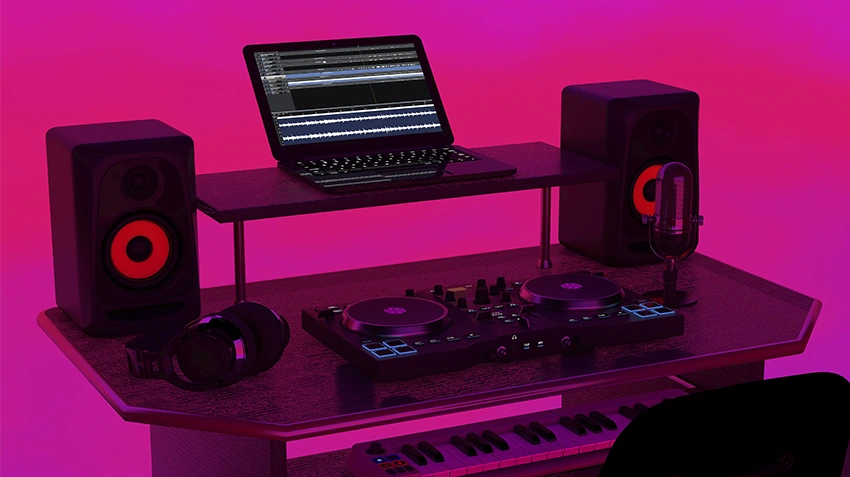
Acoustic treatment is crucial for creating a professional home studio. Many think that a big studio with expensive equipment is necessary, but with proper acoustic treatment, your home studio can achieve excellent sound quality.
DJ Karlo
BOOK FOR FREE NOW
DJ Dabby
BOOK FOR FREE NOW
How to Improve Your Home Studio Acoustics
Improving the acoustics in your home studio involves understanding and applying the right acoustic treatment methods. Here are some professional tips:
Basic Equipment for Acoustic Treatment
- Acoustic Panels: These absorb sound reflections and reduce echo, crucial for clear recordings.
- Bass Traps: These are essential for controlling low-frequency sound waves, which can cause muddiness in your mixes.
- Diffusers: These scatter sound waves, preventing them from concentrating in one spot and creating a more balanced sound field.
Optimizing Room Acoustics with DIY Acoustic Treatment
Creating a professional-sounding studio doesn’t have to be expensive. Here are some DIY tips:
- Foam Panels: Affordable and effective for mid to high frequencies, these can be easily installed on walls and ceilings.
- Heavy Curtains: Placing these over windows helps reduce reflections and external noise.
- A full bookcase and a sofa on the wall behind you can be very useful as substitutes for bass traps and diffusers, you will never know what frequencies you are working on but it will certainly be much better than an empty wall and they work quite well.
- Avoid corners, the corners between walls act like trumpets. Any sound that goes towards the corner bounces with greater intensity. You can “kill” corners with cardboard and tape, changing the 90º angle and fill the back of the cardboard with absorbent material (padding from cushions, fabric clippings, expanded polystyrene).
- If you are motivated, we encourage you to make your own panels, so you can achieve much more. Obviously, the best way to soundproof your streaming room is to place soundproofing foam on your walls in the areas where sound will be projected. For example, if you are going to be facing your monitor and talking, it would be best to place the soundproofing on the wall behind your monitor.
Choosing the Right Space for Acoustic Treatment
Selecting the right room is the first step. Here are some considerations:
- Minimize External Noise: Choose a room away from busy streets or noisy areas.
- Avoid Square Rooms: These can cause standing waves. Irregularly shaped rooms are better for sound dispersion.
Monitor Placement for Better Acoustic Treatment
Proper monitor placement is essential for accurate sound:
- Ear Level Positioning: Ensure your monitors are at ear level.
- Equilateral Triangle Formation: Position your monitors and listening position to form an equilateral triangle for optimal sound distribution.
- Read more: DJ Desk Ideas for your Setup
Detailed Steps for Acoustic Treatment
- Assess the Room: Understand the acoustics of your room. Clap your hands and listen for echoes and reflections.
- Plan the Treatment: Decide on the placement of acoustic panels, bass traps, and diffusers. Corners are ideal for bass traps, while panels can be placed on walls and ceilings.
- Install Treatment: Secure your acoustic treatments properly. Use adhesive spray or mounting brackets for foam panels and bass traps.
- Test and Adjust: After installation, test the acoustics again. Adjust the placement of treatments as needed to achieve the best sound.
Advanced Acoustic Treatment Techniques
- Cloud Panels: Hanging panels from the ceiling can help control reflections from above.
- Corner Bass Traps: Enhance low-frequency absorption by installing traps in all room corners.
- Flutter Echo Treatment: Place panels at angles to break up parallel walls and reduce flutter echo
Subscribe to our newsletter for more expert tips on acoustic treatment and home studio setup.
Subscribe to our newsletter 🎧

